Items Similar to Vintage Silver Gelatin Photograph Robert Frank
Want more images or videos?
Request additional images or videos from the seller
1 of 5
Fred McDarrahVintage Silver Gelatin Photograph Robert Frank1967
1967
About the Item
Robert Frank in Central Park. Shoot A film during Anti-War protests. April !5 1967
Robert Frank (born November 9, 1924) is an important figure in American photography and film. His most notable work, the 1958 book titled The Americans, was influential, and earned Frank comparisons to a modern-day de Tocqueville for his fresh and nuanced outsider's view of American society. Frank later expanded into film and video and experimented with manipulating photographs and photomontage.
Frank was born in Switzerland. His father, Hermann originating from Frankfurt, Germany had become stateless after losing his German citizenship as a Jew. They had to apply for the Swiss citizenship of Frank and his older brother, Manfred. In 1946. Frank emigrated to the United States in 1947, and secured a job in New York City as a fashion photographer for Harper's Bazaar. After meeting Edward Steichen, participated in the group show 51 American Photographers at the Museum of Modern Art (MoMA)
He worked as a freelance photojournalist for magazines including McCall's, Vogue, and Fortune. Associating with other contemporary photographers such as Saul Leiter and Diane Arbus, he helped form what Jane Livingston has termed The New York School of photographers during the 1940s and 1950s.
With the aid of his major artistic influence, the photographer Walker Evans, Frank secured a grant from the John Simon Guggenheim Memorial Foundation in 1955 to travel across the United States and photograph all strata of its society. Cities he visited included Detroit, Michigan; Savannah, Georgia; Miami Beach and St. Petersburg, Florida; New Orleans, Louisiana; Houston, Texas; Los Angeles, California; Reno, Nevada; Salt Lake City, Utah; Butte, Montana; and Chicago, Illinois.
Shortly after returning to New York in 1957, Frank met Beat writer Jack Kerouac on the sidewalk outside a party and showed him the photographs from his travels. Kerouac immediately told Frank "Sure I can write something about these pictures," and he contributed the introduction to the U.S. edition of The Americans. Frank also became lifelong friends with Allen Ginsberg, and was one of the main visual artists to document the Beat subculture Les Américains was first published in 1958 by Robert Delpire in Paris, and finally in 1959 in the United States by Grove Press, where it initially received substantial criticism. The Americans became a seminal work in American photography and art history, and is the work with which Frank is most clearly identified. In 1961, Frank received his first individual show, entitled Robert Frank: Photographer, at the Art Institute of Chicago. He also showed at MoMA in New York in 1962.
A celebratory exhibit of The Americans was displayed in 2009 at the National Gallery of Art in Washington D.C., the San Francisco Museum of Modern Art, and at the Metropolitan Museum of Art in New York.
By the time The Americans was published in the United States, Frank had moved away from photography to concentrate on filmmaking. Among his films was the 1959 Pull My Daisy, which was written and narrated by Kerouac and starred Ginsberg, Gregory Corso and others from the Beat circle. The Beats emphasized spontaneity, and the film conveyed the quality of having been thrown together or even improvised.
In 1960, Frank was staying in Pop artist George Segal's basement while filming Sin of Jesus with a grant from Walter K. Gutman. Isaac Babel's story was transformed to center on a woman working on a chicken farm in New Jersey. It was originally supposed to be filmed in six weeks in and around New Brunswick, but Frank ended up shooting for six months.
His 1972 documentary of the Rolling Stones, Cocksucker Blues, is arguably his best known film. The film shows the Stones while on their '72 tour, engaging in heavy drug use and group sex. Mick Jagger reportedly told Frank, "It's a fucking good film, Robert, but if it shows in America we'll never be allowed in the country again." The Stones sued to prevent the film's release. Frank's photography also appeared on the cover of the Rolling Stones' album Exile on Main St..
Fred W. McDarrah, 1926-2007
Veteran Village Voice photographer Fred W. McDarrah
Over a 50-year span, McDarrah documented the rise of the Beat Generation, the city’s postmodern art movement, its off-off-Broadway actors, troubadours, politicians, agitators and social protests.
Fred captured Jack Kerouac frolicking with women at a New Year’s bash in 1958, Andy Warhol adjusting a movie-camera lens in his silver-covered factory, and Bob Dylan offering a salute of recognition outside Sheridan Square near the Voice’s old office.
Not just a social chronicler, McDarrah was a great photo-journalist.
For years, McDarrah was the Voice's only photographer and, for decades, he ran the Voice’s photo department, where he helped train dozens of young photographers, including James Hamilton, Sylvia Plachy, Robin Holland and Marc Asnin. His mailbox was simply marked "McPhoto."
An exhibit of McDarrah’s photos of artists presented by the Steven Kasher Gallery in Chelsea was hailed by The New York Times as “a visual encyclopedia of the era’s cultural scene.”
artists in their studios, (Alice Neel, Philip Guston, Stuart Davis, Robert Smithson, Jasper Johns, Franz Kline), actors (Dustin Hoffman, Robert De Niro on the set of “Taxi Driver”), musicians (Janis Joplin, Alice Cooper, Bob Dylan) and documentary images of early happenings and performances (Yayoi Kusama, Charlotte Moorman, Al Hansen, Jim Dine, Nam June Paik). The many images of Andy Warhol include the well-known one with his Brillo boxes at the Stable Gallery in 1964. Woody Allen, Diane Arbus, W. H. Auden, Francis Bacon, Joan Baez, Louise Bourgeois, David Bowie, Jimmy Breslin, William Burroughs, John Cage, Leo Castelli, Christo, Leonard Cohen, Merce Cunningham, William de Kooning, Jim Dine, Mark di Suvero, Marcel Duchamp, Bob Dylan, Federico Fellini, Allen Ginsberg, Robert Indiana, Mick Jagger, Jasper Johns, Kusama, John Lennon, Sol Lewitt, Roy Lichtenstein, Nam June Paik, Elvis Presley, Claes Oldenburg, Yoko Ono, Robert Rauschenberg, Lou Reed, James Rosenquist, Mark Rothko, Ed Ruscha, Robert Smithson, Susan Sontag, Andy Warhol, and others.
McDarrah’s prints have been collected in depth by the J. Paul Getty Museum and the National Portrait Gallery, Washington. His work is in numerous public and private collections.
- Creator:Fred McDarrah (1926 - 2007, American)
- Creation Year:1967
- Dimensions:Height: 10 in (25.4 cm)Width: 8 in (20.32 cm)
- Medium:
- Period:
- Condition:
- Gallery Location:Surfside, FL
- Reference Number:1stDibs: LU38210658462
About the Seller
4.9
Platinum Seller
Premium sellers with a 4.7+ rating and 24-hour response times
Established in 1995
1stDibs seller since 2014
1,744 sales on 1stDibs
Typical response time: 2 hours
- ShippingRetrieving quote...Shipping from: Surfside, FL
- Return Policy
Authenticity Guarantee
In the unlikely event there’s an issue with an item’s authenticity, contact us within 1 year for a full refund. DetailsMoney-Back Guarantee
If your item is not as described, is damaged in transit, or does not arrive, contact us within 7 days for a full refund. Details24-Hour Cancellation
You have a 24-hour grace period in which to reconsider your purchase, with no questions asked.Vetted Professional Sellers
Our world-class sellers must adhere to strict standards for service and quality, maintaining the integrity of our listings.Price-Match Guarantee
If you find that a seller listed the same item for a lower price elsewhere, we’ll match it.Trusted Global Delivery
Our best-in-class carrier network provides specialized shipping options worldwide, including custom delivery.More From This Seller
View AllLarge Silver Gelatin Photograph Russian USSR Soviet Parade Yuri Gagarin Photo
By Samariy Gurariy
Located in Surfside, FL
Yuri Gagarin Meeting Workers at Foundry Stankolit, depicting the famous Russian cosmonaut (Moscow, 1961)
Gelatin silver print, gloss finish, date of printing unknown.
Provenance: acquired from the estate of photographer Samariy Gurariy...
Category
20th Century Realist Black and White Photography
Materials
Silver Gelatin
Large Silver Gelatin Russian Photograph Potsdam Conference Truman Photo WWII
By Samariy Gurariy
Located in Surfside, FL
Potsdam conference meeting depicting Josef Stalin, Winston Churchill and Harry Truman on the balcony gelatin silver print, matte finish on photograph, artist's stamp verso, approximately 11" x 15-1/2" sheet, date of printing unknown.
Provenance: acquired from the estate of photographer Samariy Gurariy...
Category
20th Century Realist Black and White Photography
Materials
Silver Gelatin
Large Silver Gelatin Russian Photograph Potsdam Conference Winston Churchill
By Samariy Gurariy
Located in Surfside, FL
Potsdam conference meeting depicting Josef Stalin, Winston Churchill and Harry Truman (not visible) at the conference table, gelatin silver print, date of printing unknown,
16-1/2" x 22-3/4" sheet, date of printing unknown.
Provenance: acquired from the estate of photographer Samariy Gurariy...
Category
20th Century Realist Black and White Photography
Materials
Silver Gelatin
Large Silver Gelatin Photograph Russian USSR Soviet Parade Yuri Gagarin Photo
By Samariy Gurariy
Located in Surfside, FL
Yuri Gagarin Meeting Workers at Foundry Stankolit, depicting the famous Russian cosmonaut (Moscow, 1961)
Gelatin silver print, matte finish, date of printing unknown.
Provenance: acquired from the estate of photographer Samariy Gurariy...
Category
20th Century Realist Black and White Photography
Materials
Silver Gelatin
Silver Gelatin Photograph Hand Signed Photo Pablo Picasso Lucien Clergue
By Lucien Clergue
Located in Surfside, FL
Lucien Clergue (FRENCH, 1934 - 2014)
Gelatin silver photographic print depicting Pablo Picasso titled "Mougins".
Jacqueline et Pablo Picasso écoutant Manitas de Plata, circa 1968.
Hand signed by the artist with hand written description. Titled and dated lower left.
Mounted in a silver painted wooden frame with mat behind acrylic screen.
Paper measures approx. 9" height x 11 1/2" width to sight. Framed measures approx. 14 3/4" height x 17 1/4" width.
Lucien Clergue (French: 1934 – 2014) was a French photographer. He was Chairman of the Academy of Fine Arts, Paris for 2013.
Lucien Clergue was born in Arles, France. At the age of 7 he began learning to play the violin, and after several years of study his teacher admitted that he had nothing more to teach him. Clergue was from a family of shopkeepers and could not afford to pursue further studies in a college or university school of music, such as a conservatory.
In 1949, he learned the basics of photography. Four years later, at a corrida in Arles, he showed his photographs to Spanish painter Pablo Picasso who, though subdued, asked to see more of his work. Within a year and a half, young Clergue worked on his photography with the goal of sending more images to Picasso. During this period, he worked on a series of photographs of travelling entertainers, acrobats and harlequins, the Saltimbanques. He also worked on a series whose subject was carrion. On 4 November 1955 Lucien Clergue visited Picasso in Cannes, France. Their friendship lasted nearly 30 years until Picasso's death. Clergue's autobiographical book, Picasso My Friend, looks back on important moments of their relationship.
In 1968, and with his friend Michel Tournier, Clergue founded the Rencontres d’Arles photography festival which is held annually in July in Arles. He exhibited his work at the festival during the years 1971–1973, 1975, 1979, 1982–1986, 1989, 1991, 1993, 1994, 2000, 2003 and 2007. Clergue also illustrated books, among them a book by writer Yves Navarre.
Clergue took many photographs of the gypsies of southern France, and was instrumental in propelling the guitarist Manitas de Plata to fame. Clergue is perhaps most remembered and respected for his vintage black-and-white studies of light, shadow, and form, featuring sinuous nude female bodies, zebra stripes of light, dynamic sand dunes, and seascapes extracted from the coast of the Camargue. Clergue's photographs are in the collections of numerous well-known museums and private collectors. His vintage photographs have been exhibited in over 100 solo exhibitions worldwide, with noted exhibitions such as in 1961, at the Museum of Modern Art New York, the last exhibition organized by Edward Steichen with Lucien Clergue, Bill Brandt and Yasuhiro Ishimoto. Museums with large collections of his work include The Fogg Museum at Harvard University and the Museum of Fine Arts, Boston. His work, Fontaines du Grand Palais (Fountains of the Grand Palais), is in Museo cantonale d'arte [de] of Lugano. His photographs of Jean Cocteau are on permanent display at the Jean Cocteau Museum in Menton, France. In the U.S., an exhibition of the Cocteau photographs was premiered at Westwood Gallery, New York City. In 2007, the city of Arles honored Lucien Clergue and dedicated a retrospective collection of 360 of his photographs dating from 1953 to 2007. He also received the 2007 Lucie Award.
He was named Knight of the Légion d'honneur in 2003 and elected member of the Academy of Fine Arts of the Institute of France on 31 May 2006, at the same time as a new section dedicated to photography was created. Clergue was the first photographer to enter the Academy to a position devoted specifically to photography.
He was Chairman of the Academy of Fine Arts for 2013.
Lucien Clergue was married to the art curator Yolande Clergue, founder of The Fondation Vincent van Gogh Arles. He was the father of two daughters: Anne Clergue, a curator of contemporary art who has worked at Leo Castelli Gallery, and Olivia Clergue, a handbag fashion designer whose godfather was Pablo Picasso.
Pablo Picasso (1881 –1973) was a Spanish painter, sculptor, printmaker, ceramic artist and theatre designer who spent most of his adult life in France. Regarded as one of the most influential artists of the 20th century, he is known for co-founding the Cubist movement, the invention of constructed sculpture, the co-invention of collage, and for the wide variety of styles that he helped develop and explore. Among his most famous works are the proto-Cubist Les Demoiselles d'Avignon (1907), and Guernica (1937), a dramatic portrayal of the bombing of Guernica by German and Italian air forces during the Spanish Civil War. After 1906, the Fauvist work of the slightly older artist Henri Matisse motivated Picasso to explore more radical styles, beginning a fruitful rivalry between the two artists, who subsequently were often paired by critics as the leaders of modern art. In 1897, his realism began to show a Symbolist influence, for example, in a series of landscape...
Category
20th Century Modern Black and White Photography
Materials
Silver Gelatin
Silver Gelatin Photograph Hand Signed Photo Pablo Picasso Profile Lucien Clergue
By Lucien Clergue
Located in Surfside, FL
Lucien Clergue (FRENCH, 1934 - 2014)
Gelatin silver photographic print depicting Pablo Picasso with a frog or turtle.
Mougins, 1968
Hand signed by the artist with hand written description. Titled and dated lower left.
Mounted in a silver painted wooden frame with mat behind acrylic screen.
Paper measures approx. 11 3/4" height x 9" width to sight. Framed measures approx. 17 1/4" height x 14 3/4" width.
Lucien Clergue (French: 1934 – 2014) was a French photographer. He was Chairman of the Academy of Fine Arts, Paris for 2013.
Lucien Clergue was born in Arles, France. At the age of 7 he began learning to play the violin, and after several years of study his teacher admitted that he had nothing more to teach him. Clergue was from a family of shopkeepers and could not afford to pursue further studies in a college or university school of music, such as a conservatory.
In 1949, he learned the basics of photography. Four years later, at a corrida in Arles, he showed his photographs to Spanish painter Pablo Picasso who, though subdued, asked to see more of his work. Within a year and a half, young Clergue worked on his photography with the goal of sending more images to Picasso. During this period, he worked on a series of photographs of travelling entertainers, acrobats and harlequins, the Saltimbanques. He also worked on a series whose subject was carrion. On 4 November 1955 Lucien Clergue visited Picasso in Cannes, France. Their friendship lasted nearly 30 years until Picasso's death. Clergue's autobiographical book, Picasso My Friend, looks back on important moments of their relationship.
In 1968, and with his friend Michel Tournier, Clergue founded the Rencontres d’Arles photography festival which is held annually in July in Arles. He exhibited his work at the festival during the years 1971–1973, 1975, 1979, 1982–1986, 1989, 1991, 1993, 1994, 2000, 2003 and 2007. Clergue also illustrated books, among them a book by writer Yves Navarre.
Clergue took many photographs of the gypsies of southern France, and was instrumental in propelling the guitarist Manitas de Plata to fame. Clergue is perhaps most remembered and respected for his black-and-white studies of light, shadow, and form, featuring sinuous nude female bodies, zebra stripes of light, dynamic sand dunes, and seascapes extracted from the coast of the Camargue. Clergue's photographs are in the collections of numerous well-known museums and private collectors. His vintage photographs have been exhibited in over 100 solo exhibitions worldwide, with noted exhibitions such as in 1961, at the Museum of Modern Art New York, the last exhibition organized by Edward Steichen with Lucien Clergue, Bill Brandt and Yasuhiro Ishimoto. Museums with large collections of his work include The Fogg Museum at Harvard University and the Museum of Fine Arts, Boston. His work, Fontaines du Grand Palais (Fountains of the Grand Palais), is in Museo cantonale d'arte [de] of Lugano. His vintage photographs of Jean Cocteau are on permanent display at the Jean Cocteau Museum in Menton, France. In the U.S., an exhibition of the Cocteau photographs was premiered at Westwood Gallery, New York City. In 2007, the city of Arles honored Lucien Clergue and dedicated a retrospective collection of 360 of his photographs dating from 1953 to 2007. He also received the 2007 Lucie Award.
He was named Knight of the Légion d'honneur in 2003 and elected member of the Academy of Fine Arts of the Institute of France on 31 May 2006, at the same time as a new section dedicated to photography was created. Clergue was the first photographer to enter the Academy to a position devoted specifically to photography.
He was Chairman of the Academy of Fine Arts for 2013.
Lucien Clergue was married to the art curator Yolande Clergue, founder of The Fondation Vincent van Gogh Arles. He was the father of two daughters: Anne Clergue, a curator of contemporary art who has worked at Leo Castelli Gallery, and Olivia Clergue, a handbag fashion designer whose godfather was Pablo Picasso.
Pablo Picasso (1881 –1973) was a Spanish painter, sculptor, printmaker, ceramic artist and theatre designer who spent most of his adult life in France. Regarded as one of the most influential artists of the 20th century, he is known for co-founding the Cubist movement, the invention of constructed sculpture, the co-invention of collage, and for the wide variety of styles that he helped develop and explore. Among his most famous works are the proto-Cubist Les Demoiselles d'Avignon (1907), and Guernica (1937), a dramatic portrayal of the bombing of Guernica by German and Italian air forces during the Spanish Civil War. After 1906, the Fauvist work of the slightly older artist Henri Matisse motivated Picasso to explore more radical styles, beginning a fruitful rivalry between the two artists, who subsequently were often paired by critics as the leaders of modern art. In 1897, his realism began to show a Symbolist influence, for example, in a series of landscape paintings...
Category
20th Century Modern Black and White Photography
Materials
Silver Gelatin
You May Also Like
Self-Portrait on Studio Floor II (after Tabboo!)
Located in New York, NY
This photograph by Ian Lewandowski is offered by Clamp in New York City.
Self-Portrait on Studio Floor II (after Tabboo!)
2020
Signed, dated, and numbered, verso
Gelatin silver co...
Category
2010s Contemporary Photography
Materials
Silver Gelatin
1970s Fashion editorial photo Turban and Feathers
Located in Wilton Manors, FL
Kenn Duncan (1928-1986). Woman with Turban and Feathers, ca. 1973. 11 x 14 inches; 12 x 15 inches framed. The print was used for publication in After Dark Magazine. From the estate of William Como, Editor in Chief, After Dark Magazine.
Kenneth Duncan was born September 22, 1928, in New Jersey. He began his career as a skater and then a dancer. After breaking his foot and taking a six-week course on photography at a YMCA, he became a photographer. Duncan worked as a principal photographer for After Dark and Dance Magazine. His photographs also regularly appeared in Vogue, Harper's Bazaar, Life, Time, and Newsweek. In addition, he photographed a score of Broadway shows, including Hair, Applause, The Elephant Man, and Sophisticated Ladies and many dance and Broadway stars including Chita Rivera...
Category
1970s American Realist Black and White Photography
Materials
Silver Gelatin
Lovers, San Francisco.
Located in Wilton Manors, FL
Fisher Ross. Untitled, ca. 1975-80. Gelatin Silver print, sheet measures 8 x 10 inches; 17 x 21 inches framed. Artist studio stamp on verso. Excellent cond...
Category
1970s Realist Black and White Photography
Materials
Silver Gelatin
Untitled (Boy Making Gesture) [Michael and Christopher]
By Ralph Eugene Meatyard
Located in New York, NY
From a portfolio of ten gelatin silver prints from original Meatyard negatives (1959-71)
Printed April 1974
Edition of 130
Credit stamp, verso
7 x 7 inches, image
15 x 12 inches, mount
This photograph is offered by ClampArt, located in New York City.
“In the 1950s few photographers, particularly men, chose their models from their own families. Meatyard, however, found inspiration in his three offspring. This was perhaps due to his interest in Ben Shahn’s postwar paintings of Italian children playing among the ruins of war; the dolls, puppets, and children in Rainer Maria Rilke’s poetry...
Category
Late 20th Century American Modern Portrait Photography
Materials
Silver Gelatin
Brigitte Bardot by Robert Cohen for AGIP - Silver Gelatin B and W Photography
By Robert Cohen
Located in Atlanta, GA
An original silver gelatin black and white photograph by Robert Cohen for AGIP. Brigitte Bardot in 1967.
Features:
Original silver gelatin print photograph unframed.
Press photograph...
Category
1960s Modern Black and White Photography
Materials
Silver Gelatin
Marlon Brando, Libertyville, Illinois, 1950 - Silver Gelatin Print
By Art Shay
Located in Chicago, IL
On assignment for Life Magazine in 1950, Art Shay photographed Marlon Brando at his family farm in Libertyville, Illinois, just north of Chicago. Looking straight into Art's lens, Brando is innocent of the fame that is about to become his world. He went on to a career spanning sixty years including winning two Oscars for Best Actor. This photograph is unframed. Contact the gallery for framing options.
Art Shay
Brando Portrait, 1950
silver gelatin print
20h x 16w in
50.80h x 40.64w cm
ASY12088
“Art Shay’s photography shakes you up, sets you down gently, pats you on the head and then kicks you in the ass.”
Roger Ebert
“[Shay’s work] ranks with some of the greats of the 20th century.”
Ellen & Richard Sandor, Renowned photo collectors
“I’ve admired Art Shay’s work for almost forty years, and he keeps getting better. He can do anything with a camera, but what he mostly does is capture real moments and transform them into visual poetry. His work continues to be an inspiration to me.”
William Friedkin, Director of French Connection
“Art Shay is one of our finest photographers. His work over the past fifty years has artfully captured the beauty, humor, and pathos of America.”
Studs Terkel
“Art Shay is one of the best photojournalists I know. I’ve been a fan of his work since the early 1950s - before the launch of playboy magazine.”
Hugh Hefner
“Algren, Terkel, Royko, they gave us a voice. Art Shay gave us a face.”
Tony Fitzpatrick, Chicago Artist
“Art Shay is America’s Cartier-Bresson.”
Thomas Dyja, author of The Third Coast
“Chicago’s Art Shay in many ways is to American photography what Nelson Algren was to American writing: that rare and absolutely necessary citizen who’s blessed with a cold eye, a clear head, and a warm heart. What is it about Chicago that keeps giving us men like this?”
Russell Banks, Novelist
“The best images of Simone de Beauvoir and her times have been passed down to us by Henri Cartier-Bresson, Gisele Freund, Robert Doisneau, Georges Brassai, and in America, the Chicago-based Art Shay, all world-class photographers.”
Christophe Loviny, Art Editor, Paris
“Art Shay is the best photo-journalist Chicago ever produced.”
Arthur Siegel, photographer; IIT Institute of Design President
“I have one of Art Shay’s pictures over my desk. It reminds me every morning of my Chicago roots. Arts photos, like me, have the Chicago accent, which may be to say he’s telling you the truth. I think it takes a realist to see the humor in things. I know it takes a realist to see the depths of tragedy. Art’s work is so real it feels like a Madison Street guy tapping me on the forearm.”
David Mamet
Category
1950s Contemporary Black and White Photography
Materials
Silver Gelatin
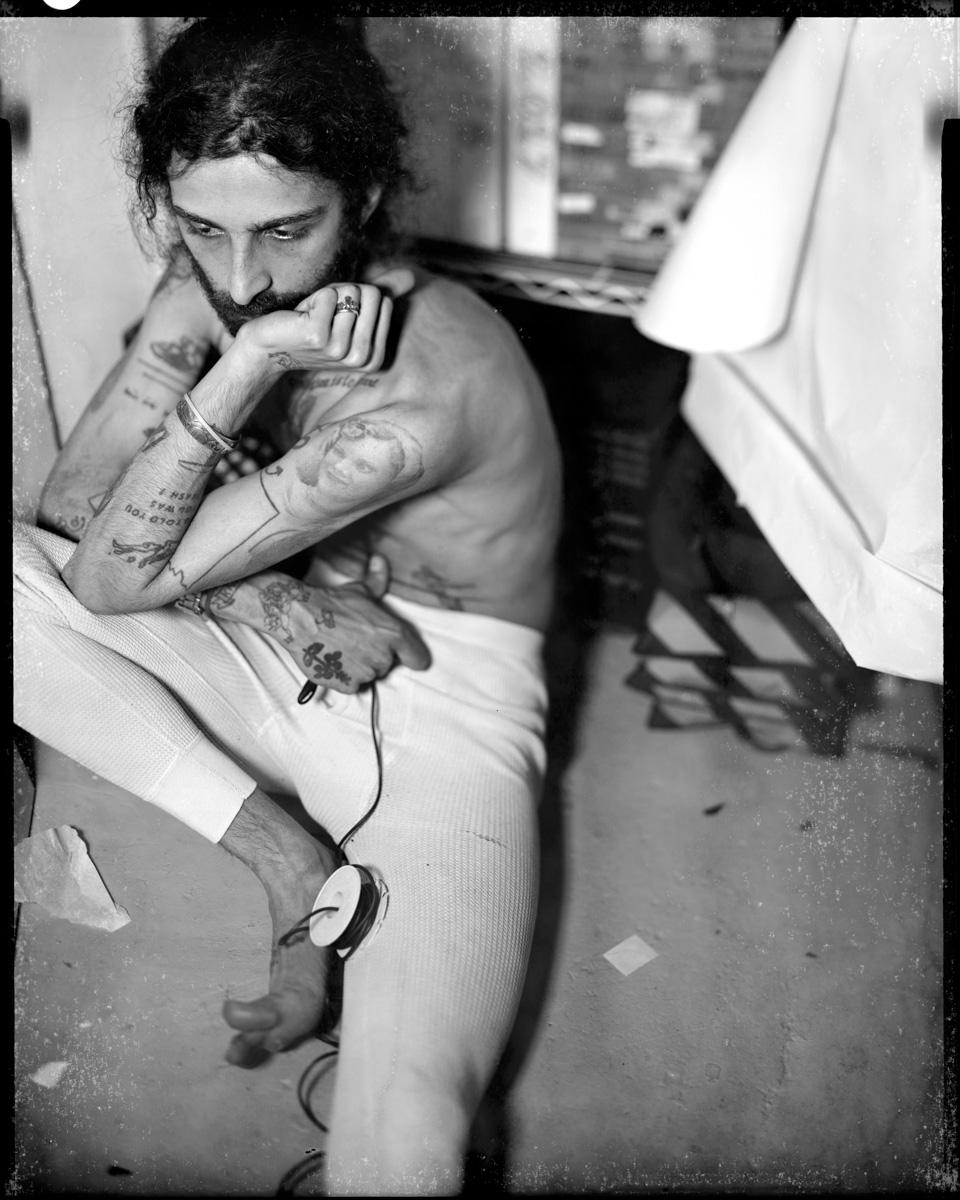
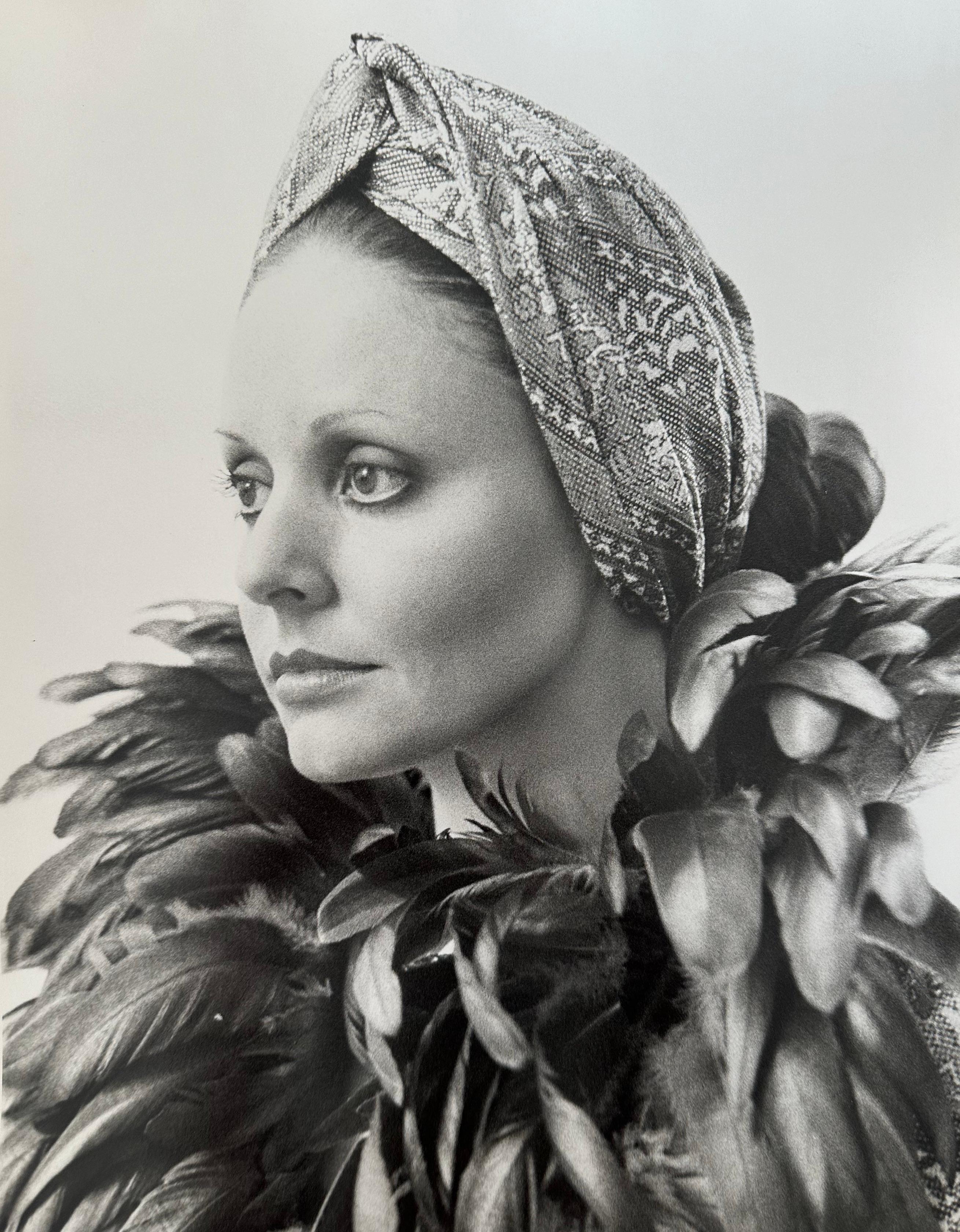
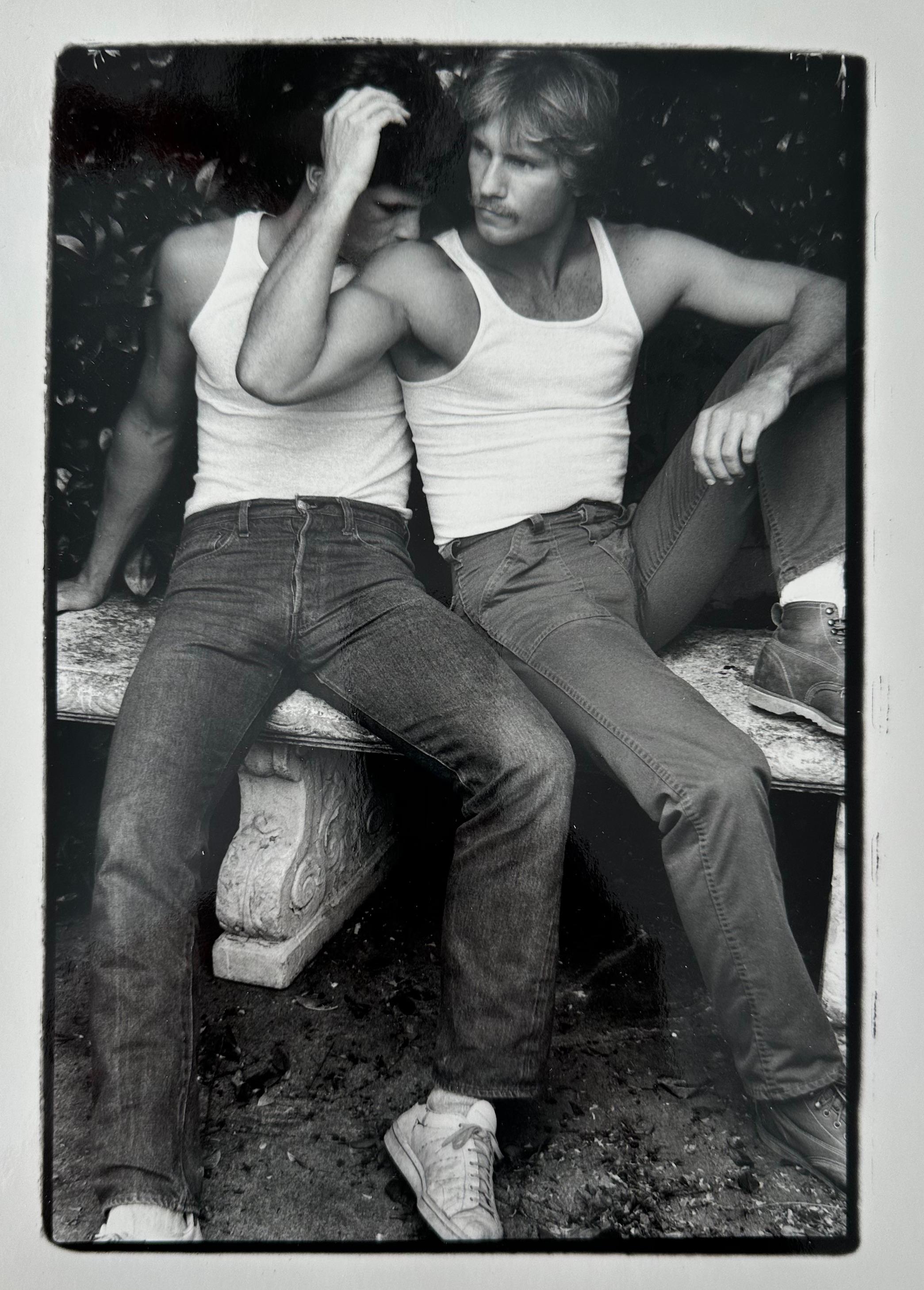
![Untitled (Boy Making Gesture) [Michael and Christopher]](https://a.1stdibscdn.com/ralph-eugene-meatyard-photography-untitled-boy-making-gesture-michael-and-christopher-for-sale/a_9323/a_131894721696437982830/Meatyard_Untitled_boymakinggesture__master.jpg)
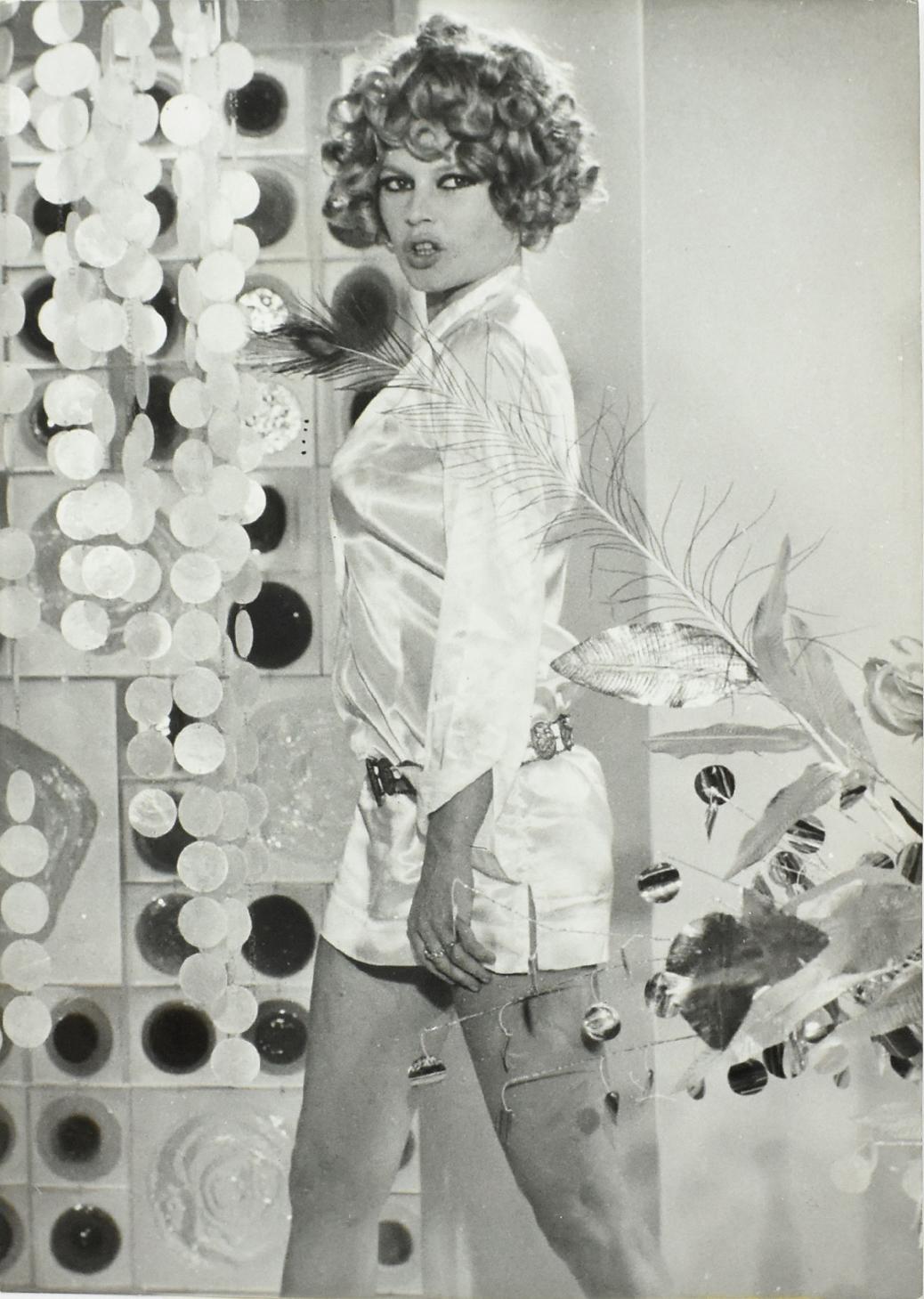
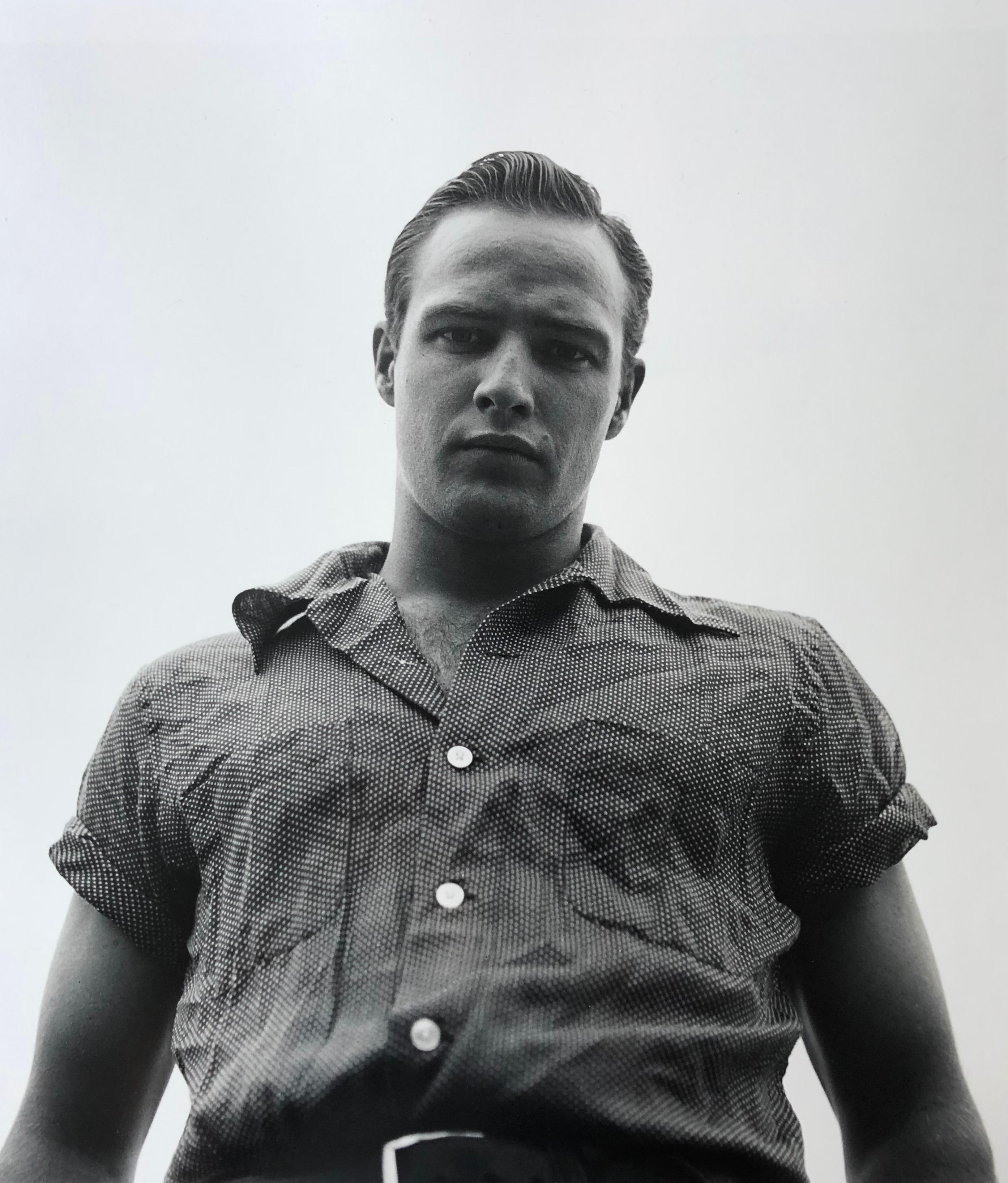

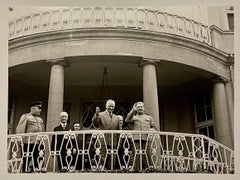
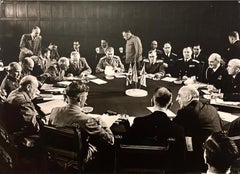
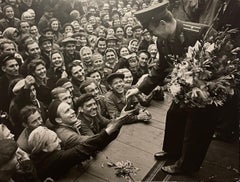
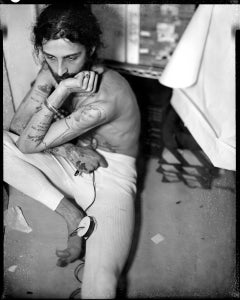

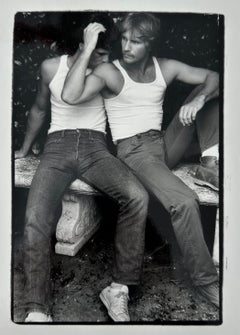
![Untitled (Boy Making Gesture) [Michael and Christopher]](https://a.1stdibscdn.com/ralph-eugene-meatyard-photography-untitled-boy-making-gesture-michael-and-christopher-for-sale/a_9323/a_131894721696437982830/Meatyard_Untitled_boymakinggesture__master.jpg?width=240)